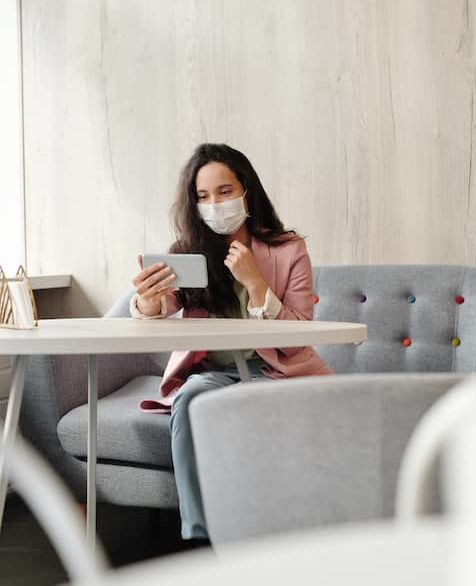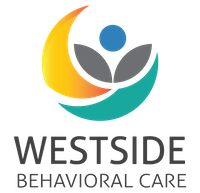Kaiser Therapist In The Greater Denver Area: What Is Seasonal Affective Disorder? Signs And Symptoms.
Kaiser Therapist In The Greater Denver Area: What Is Seasonal Affective Disorder? Signs And Symptoms.
Seasonal Affective Disorder And Seasonal Patterns
 Seasonal affective disorder, also known as SAD or seasonal depression, is a condition that affects millions of people. It is more common during the winter months when the days are shorter, hence its name. The symptoms tend to wane once spring sets in. People who suffer from seasonal affective disorder often have a hard time going about their daily activities and working on their relationships during the period in which they suffer from SAD.
Seasonal affective disorder, also known as SAD or seasonal depression, is a condition that affects millions of people. It is more common during the winter months when the days are shorter, hence its name. The symptoms tend to wane once spring sets in. People who suffer from seasonal affective disorder often have a hard time going about their daily activities and working on their relationships during the period in which they suffer from SAD.
What is seasonal affective disorder?
Seasonal Affective Disorder is a seasonal disorder that can impact the mental health of people from different age groups. There are many types of depression and SAD is one of them. The distinguishing feature is that this is a seasonal condition that often resolves on its own as the season changes. From the close of fall to the early winters, some people tend to feel gloomier as the days become shorter and darker and experience change within your internal clock and biological clock. Various kinds of treatment can help people dealing with SAD, including simulated light therapy to make up for reduced sun exposure. Melatonin and serotonin are essential for good sleep and better mood, respectively. Sunlight plays a critical role in ensuring that the body generates enough of these hormones. During the cold winter months, some people might experience a drop in these hormones which leads to mild to moderate depression. Another factor could be due to the change in the circadian rhythm with the changes in the daylight duration.
Signs and Symptoms
Common symptoms of seasonal affective disorder may include:
- Lack of appetite
- Sleeping too much
- Depressed mood
- Low energy
- Inability to experience pleasure
- Hopelessness
- Lack of interests in those activities that you usually love doing
- Trouble getting yourself out of bed in the morning
- Unusually long sleeping hours
- Crankiness and mood changes
- Weight gain/ Weight loss
- Changes in the appetite/ Carbohydrate cravings
- Drop in the energy levels throughout the day
- Lack of focus
- Insomnia
Depending on the lifestyle, age, health of the individual, and the region where the person resides there could be a combination of more than one of the above symptoms.
Therapies and strategies for coping with SAD:
Phototherapy
Phototherapy is a light therapy in which a patient suffering from SAD is exposed to a source that mimics natural light. Usually, a light box generating 10,000 lux of white or blue light is used for a prescribed amount of time, typically 30 minutes. A regular desk lamp or a yellow light should not be used for this purpose.
Cognitive Behavioral Therapy
Research indicates that a relatively short period of cognitive behavior therapy is often effective for SAD and has the additional benefit of having an active, caring therapist onboard who can assess and treat this and additional concerns. You can easily schedule an appointment with one of our cognitive behavioral therapists in Denver and nearby areas.
Nutrition
A lack of Vitamin D that arises as a result of the lack of exposure to sunlight may play a role in SAD. If needed, use Vitamin D supplements, especially D3. It isn’t always easy to get vitamin D within acceptable ranges, and blood testing is oftentimes a good idea to ensure that the dosage is adequate.
Exercise
Try to get as much sun exposure as possible during the winter. Take frequent, relaxing walks and soak up as much sun as you can.
Seasonal Affective Disorder
Seasonal Affective Disorder Seasonal affective disorder (SAD), also known as seasonal depression, is a mental health condition that certain individuals might develop owing to a seasonal change. Most individuals who experience this mood disorder typically begin to develop symptoms with the start of the fall season. The symptoms worsen during the winter months, and they gradually go away on their own in the spring or summer. Some individuals may also experience a form of SAD known as ‘summer depression’, which starts in spring or summer and ends either in fall or winter. If you experience this mood disorder every year, you’d know it can have a variety of negative effects on how you think and feel. While seeking treatment is recommended for keeping the effects of SAD at bay, there are some other ways to minimize the condition’s effects as well. In this article, we’ll take a closer look at what those ways are.
- Start to prepare for it before the symptoms hit Typically, the symptoms of SAD develop during the same period every year. This gives you an advantage – you can prepare your mind for the condition, so it doesn’t overwhelm you when the symptoms start to show. So, when fall is around the corner, you should start engaging in activities that you enjoy, including social activities with friends and family. These activities will lift your spirits and give a much-needed boost to your mental health. You should also spare some time every day for exercise, as regular physical activity can have numerous benefits for your psychological health as well. Don’t wait for the symptoms to kick in before starting these activities. Once depression takes its hold, it can be incredibly difficult to motivate yourself to engage in activities, even the most enjoyable ones.
Practice healthy eating What you eat has a lot to do with how you feel. Simply put, if you eat a ton of junk food, there are bound to be negative consequences for your body, which will, in turn, affect your mental health as well. So, it’s best to eat healthy food. Increasing your consumption of fruits and vegetables is recommended, as these are slow-burning foods that provide sustainable energy. These foods are much better than carbs, which drastically enhance energy but tend to make people feel lazy during mid-day. We recommend working with a certified nutrition coach to improve your diet during your SAD phase. Also, the occasional bit of junk food, cookies and candies won’t do much damage. - Let the light in While the root causes of SAD are still not very well understood, one thing’s clear – the condition worsens when there’s a lack of sunlight. Of course, during the winter months, there will be many days when the sun isn’t at the peak of its powers. That’s why it’s essential that individuals with SAD expose themselves to as much natural light as possible. For example, take a walk outside when the sun’s at its strongest (typically noon). When staying indoors during the day, keep the blinds open, so natural light finds its way in. Remember, once the sun goes down, you’ll be reliant on indoor lighting, which is known for negatively affecting symptoms of SAD, as it’s significantly dimmer compared to natural light.
- Practice aromatherapy In recent years, aromatherapy has been suggested as one of the management methods for SAD. It involves using essential oils, which can be effective in managing symptoms of not just depression, but insomnia and anxiety as well. While aromatherapy on its own won’t make much of a difference in terms of improving SAD symptoms, it can be beneficial when combined with some other soothing activity. Experts say that essential oils influence certain areas of the brain that dictate mood and sleep. However, you must remember to practice safe aromatherapy, as the use of essential oil diffusers or the ingestion of essential oils can result in harmful effects. Ideally, you should use aroma sticks featuring absorbent materials and apply the oils on the sticks.
- Increase your Vitamin D intake If your exposure to sunlight is limited, you’re likely to experience Vitamin D deficiency, which is known to exacerbate the symptoms of depression. That’s why it’s vital that you take vitamin D supplements during the winter months. While there’s no guarantee that increasing vitamin D intake will eliminate SAD symptoms altogether, it will definitely prevent vitamin D deficiency, which can also pose other health risks. Before you start taking a supplement, we recommend consulting a doctor for testing your current levels of vitamin D. You should only take supplements if your vitamin D levels are lower than what’s optimum.
- Bright light therapy
Bright light therapy involves the use of phototherapy boxes for keeping an individual’s circadian rhythm ticking. When one’s circadian rhythm is on track, it typically has mood-boosting effects. The lights given off by phototherapy boxes in light therapy mimic natural light from the sun, and they’re much brighter than the lighting offered by regular bulbs. Phototherapy boxes also provide lights in a variety of wavelengths. Ideally, you should practice bright light therapy in the morning within an hour after waking up. You could also seek treatment for your SAD by working with a skilled therapist. This is where health insurance packages like Humana and Kaiser Medicare can come in and play an important role in covering your expenses. Therapists across Littleton, Aurora, and Westminster accept insurance claims provided by Humana. Click the link to find Therapist to help with seasonal depression https://www.ale.staging.westsidebehavioralcare.com/
Seasonal Affective Disorder and COVID
 Winter has different effects on different people. Some of the common things like minimal exposure to sunlight and exposure to sudden weather changes can affect people’s physical and mental state. Seasonal affective disorder, or SAD, is known to affect millions of people around the world. With COVID having changed what “normal” feels like, its relationship with SAD is a topic worth understanding.
Winter has different effects on different people. Some of the common things like minimal exposure to sunlight and exposure to sudden weather changes can affect people’s physical and mental state. Seasonal affective disorder, or SAD, is known to affect millions of people around the world. With COVID having changed what “normal” feels like, its relationship with SAD is a topic worth understanding.
How COVID impacts SAD
 With COVID, there is a pressing need for social distancing. People who are usually socially active might experience a sudden change in their lifestyle. During the cold winter months as the SAD risks creep in, the reduced human interaction could act as an additional trigger. With this being the first pandemic of its kind, COVID and SAD’s actual relationship is yet to be fully understood. But due to COVID, travel during the holiday season as well as parties and social gatherings have all changed. With these social activities dwindling, and with people spending more time indoors, exposure to sunlight tends to drop further. Across the globe, COVID-induced anxiety has been prominent. Political and economical changes have also been affecting the mental health condition of individuals in various age groups. As a result, even people who have never experienced seasonal affective disorder earlier in their life might become vulnerable to it this year. Those who usually experience mild symptoms might observe a slightly higher intensity of major depression this year.
With COVID, there is a pressing need for social distancing. People who are usually socially active might experience a sudden change in their lifestyle. During the cold winter months as the SAD risks creep in, the reduced human interaction could act as an additional trigger. With this being the first pandemic of its kind, COVID and SAD’s actual relationship is yet to be fully understood. But due to COVID, travel during the holiday season as well as parties and social gatherings have all changed. With these social activities dwindling, and with people spending more time indoors, exposure to sunlight tends to drop further. Across the globe, COVID-induced anxiety has been prominent. Political and economical changes have also been affecting the mental health condition of individuals in various age groups. As a result, even people who have never experienced seasonal affective disorder earlier in their life might become vulnerable to it this year. Those who usually experience mild symptoms might observe a slightly higher intensity of major depression this year.
Tips to manage seasonal affective disorder during the pandemic
COVID has been stressful for people in different parts of the world in several ways. As winter blues worsen the condition various self-care tips can help you focus on your mental health. Here are some ways to alleviate the symptoms of SAD during the pandemic:
1. Exposure to sunlight
Staying at home is considered the best way to stay safe in order to avoid contracting infections from unknown sources. But there are many ways in which you can still ensure that your body gets enough sunlight every day. Spending a few minutes daily in your backyard or even going for a short walk in your neighborhood can give your body its daily dose of vitamin D from sunlight.
2. Do not shy away from seeking medical assistance
Talk to your doctor if you usually don’t experience SAD symptoms and suddenly notice them this year. It would also be time to visit your doctor if you notice your usual symptoms worsening this year. There are various treatments available for SAD including phototherapy. Psychotherapy can also be helpful for individuals who are having suicidal thoughts or extreme depression during the winter months. Depending on the symptoms some patients might be given anti-depressant medication if required.
3. Get into a routine
Changes in your body’s natural clock (or circadian rhythm) is one of SAD’s main causes. Establishing a routine can be very useful to minimize the risks and symptoms of SAD during COVID times. As the pandemic has pushed many people to work from home, most people have given up on routines. Darken your room by evening and let ample natural light during the day. Fix your sleep and wake timings. These are a few ways in which you can restore your circadian rhythm that has gone off-track.
Managing SAD
Besides all the above tips, eating a healthy diet, staying active, and staying connected with friends virtually can give you that much-needed boost. Professional help also provides the additional support you may need to manage SAD during COVID. It is easy to find and schedule an appointment with one of our therapists specialized in depression in Denver and nearby areas.

